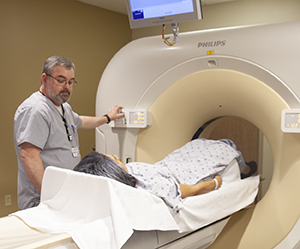Electrothermal therapy, also known as intradiscal electrothermal therapy, is often done in a hospital or surgery center. You will not need to stay overnight. Before the procedure, you and your healthcare provider will discuss how you need to prepare.
Before you agree to this procedure, ask the healthcare provider the following questions:
-
Why do I need this procedure?
-
Are there any alternatives?
-
How many times have you done this procedure?
-
What are the possible complications?
-
When will I see the results?
If you don't feel comfortable asking the healthcare provider these questions, ask a family member or friend to come with you to ask them. The answers are critical to your health and safety.
Your exam and tests
You’ll have an exam to make sure you are healthy enough to have this procedure. You will also have tests that give information about your disk. These may include:
-
Discogram. For this imaging test, dyes are injected into the disk. They can be seen on an X-ray. This test is done to pinpoint the disk that's causing your pain.
-
MRI or CT scan . These and other imaging tests may help your healthcare provider learn more about how your disk is damaged.
Before the procedure
-
Tell your healthcare provider about all the medicines you take. This includes over-the-counter medicines, such as aspirin, herbs, vitamins, and supplements.
-
Stop taking medicines as advised by your healthcare provider.
-
Stop eating and drinking
8 hours before the procedure. -
Arrange for an adult friend or family member to drive you home.
-
Allow time to check in. You will need to sign an informed consent form stating that the procedure has been explained to you. Be certain all of your questions are answered before you sign.
Preparing at home
Arranging a few things ahead of time can make recovery easier and safer.
-
Store supplies between hip and shoulder level. That way, you can get to them without reaching or bending.
-
Arrange for rides. You may not be able to drive for a week or more after the procedure.
-
Find someone to help with chores and errands.
-
Bring a pair of slip-on shoes with closed backs or slippers. That way, you won’t have to bend to put on your shoes.


